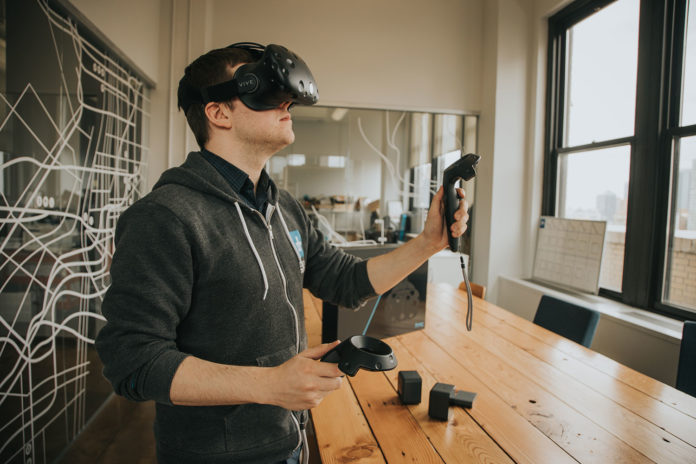One of the biggest issues with the current generation of Virtual Reality headsets are the heavy cables that get in the way of an immersive experience. Being tethered to a machine can limit your movement and even though there are different solutions available, such as VR backpacks, players still can’t perform the extortive movement needed for VR fitness to be possible. That’s where the MoVR comes in. Developed by a team at MIT, MoVR is a system of wireless antennas that are specifically designed for virtual reality. With it, MIT aims to deliver an immersive experience, without sacrificing graphical fidelity and frame rates.
The MoVR Hardware

MoVR implements the latest wave transmission technology, that is also used in the next-gen 5G mobile networks. Called millimeter-wave technology, it will help wireless VR by increasing the communication speed between the HMD and the computer at a rate of gigabytes per second. Compared to the current technology we have, such as RF or WiFi, which cap at rates lower than a few Gbps, millimeter-wave tech can help HMDs receive uncompressed data. Nevertheless, there are still some limitations to the technology. For example, the HMD does need to be in line-of-sight for transmission. However, the MIT’s team behind MoVR is actively trying to get around this issue by using programmable mirrors that help with the reconfiguration of the signal and its detection. That way, the player won’t need to worry about breaking the signal with hand movement or other movements around the playing ground.
The hardware of MoVR itself consists of two small boards, that feature antennas that are smaller than a credit card. With that in mind, developers won’t need to worry about implementing the technology within their headsets, as it doesn’t need much space. Nevertheless, MIT does plan on bringing MoVR to the end consumer in the form of an HMD add-on, so that players wouldn’t need to buy entirely new headsets.
MoVR and The Future of VR Fitness
In order for virtual reality fitness to truly be possible, the industry does need a stable wireless communication between the computer and the HMD. While mobile gaming does manage to get around certain issues, the truth is that developers are simply not eager enough to deliver high-end content for mobile devices yet. What’s more, the hardware of smartphones is pretty limited, especially for VR, when compared to personal computers. Another difference between PC headsets and mobile ones is the lack of room-scale experiences, which may be changed by the Google Tango project, but again, developers need to deliver on the content side of things for mobile.
That being said, PC Virtual reality fitness is possible within a smaller fraction of time in the near future as we do have amazing content, but lack a few innovations, such as wireless connectivity. MoVR does prove to be a valuable option in the sense of delivering a more immersive experience and it also allows for better freedom of movement. However, there are still a few limitations that need to be addressed in the coming months, including power supply and the aforementioned issue with line of sight disruption. Nevertheless, we are more than eager to see these new developments in the virtual reality fitness scene.












[…] read more from here […]
Thanks for your visit and share!